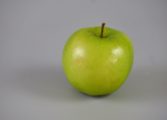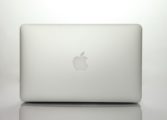USB-C Apple – Overcoming the Limitations of Traditional USB Connections

Introduction: The Increasing Popularity of USB-C in the Apple Ecosystem
In recent years, USB-C has emerged as the new standard for connectivity in the Apple ecosystem. With its compact and versatile design, USB-C has significantly enhanced the user experience and overcome the limitations of traditional USB connections. In this article, we will provide a comprehensive overview of USB-C Apple, including its functionality, popularity, types, quantitative measurements, differences between various USB-C models, and a historical analysis of their advantages and disadvantages.
1. An In-depth Understanding of USB-C Apple

USB-C Apple, also known as USB Type-C, is a cutting-edge interface technology designed to facilitate a wide range of data transmission and power delivery requirements. It is the replacement for traditional USB-A connections, offering faster transfer speeds, higher power output, and enhanced versatility. Unlike its predecessors, USB-C Apple is a symmetrical connector, which means that it can be inserted with either side facing up.
2. Extensive Presentation of USB-C Apple
2.1 Functionality: USB-C Apple serves multiple purposes, including data transfer, power delivery, and display connectivity. It allows users to connect devices such as iPhones, iPads, MacBooks, and peripherals with a single cable, streamlining the overall user experience. Furthermore, USB-C Apple supports numerous protocols, such as USB 3.1, Thunderbolt 3, and HDMI, making it compatible with a wide array of devices.
2.2 Types of USB-C Apple: USB-C Apple comes in various forms, including USB-C to USB-A, USB-C to Lightning, and USB-C to USB-C. These cables enable users to connect their Apple devices to different USB interfaces, ensuring seamless data transfer and charging capabilities.
2.3 Popularity: USB-C Apple has gained immense popularity among Apple users due to its enhanced capabilities and convenience. It has become the go-to connector for various purposes, ranging from charging iPhones and iPads to connecting external monitors and accessing high-speed storage devices.
3. Quantitative Measurements of USB-C Apple
The quantitative measurements of USB-C Apple play a crucial role in determining its performance and efficiency. These measurements include data transfer speed, power output, and video resolution support.
3.1 Data Transfer Speed: USB-C Apple supports various data transfer standards, such as USB 3.1 Gen 1 and USB 3.1 Gen 2. USB 3.1 Gen 1 offers transfer speeds of up to 5 Gbps, while USB 3.1 Gen 2 provides speeds of up to 10 Gbps. This allows for quick and seamless file transfers between devices.
3.2 Power Output: USB-C Apple supports Power Delivery (PD), which enables higher power outputs compared to traditional USB connections. This means faster charging for devices, including iPhones, iPads, and MacBooks. USB-C Apple can deliver up to 100W of power, depending on the capability of the connected device and the power adapter.
3.3 Video Resolution Support: USB-C Apple’s compatibility with protocols like Thunderbolt 3 ensures support for high-resolution displays. It can handle video output of up to 5K or even dual 4K displays, transforming the viewing experience on compatible Apple devices.
4. Exploring the Differences Between USB-C Apple Models
USB-C Apple models differ in terms of their capabilities and compatibility with various Apple devices.
4.1 USB-C to USB-A: This type of cable allows users to connect their USB-C enabled devices, such as MacBooks, to USB-A ports commonly found on older peripherals and computers. It ensures backward compatibility and transition towards USB-C technology.
4.2 USB-C to Lightning: USB-C to Lightning cables provide fast charging and data transfer capabilities for iPhones, iPads, and other Apple devices equipped with Lightning ports. This connector is widely used for syncing media, transferring files, and charging devices.
4.3 USB-C to USB-C: USB-C to USB-C cables offer the ultimate USB-C experience, allowing users to connect USB-C devices directly without the need for adapters or dongles. This type of cable is commonly used to charge MacBooks, connect to external displays, and transfer data between USB-C enabled devices.
5. Historical Overview: Advantages and Disadvantages of USB-C Apple
5.1 Advantages: USB-C Apple has numerous advantages over traditional USB connections. It offers faster data transfer speeds, higher power output, and enhanced versatility. USB-C Apple cables are also reversible and more durable, ensuring ease of use and longer lifespan. Furthermore, USB-C Apple supports multiple protocols, enabling seamless connectivity across a wide range of devices.
5.2 Disadvantages: Although USB-C Apple has revolutionized connectivity, it does have some limitations. The transition from older USB connectors to USB-C can be challenging, requiring the use of adapters and dongles. Additionally, not all USB-C cables are created equal, and compatibility issues may arise when using third-party or uncertified cables. However, these issues can be mitigated by using reliable, certified cables and adapters.
Conclusion: Embracing the Future of Apple Connectivity with USB-C
USB-C Apple has undoubtedly revolutionized the way we connect and interact with Apple devices. Its compact design, enhanced capabilities, and versatile functionality make it an essential component of the Apple ecosystem. As technology continues to evolve, USB-C Apple remains at the forefront, overcoming the limitations of traditional USB connections and paving the way for seamless data transfer, efficient power delivery, and enhanced display connectivity.
Video: Get to Know USB-C Apple – The Future of Apple Connectivity
In this video, we provide a visual guide to USB-C Apple, explaining its features, types, and advantages. Join us as we explore the benefits of USB-C Apple and showcase its compatibility with various Apple devices. Watch the video to discover the future of Apple connectivity!
Introduction: The Increasing Popularity of USB-C in the Apple Ecosystem
1. An In-depth Understanding of USB-C Apple
2. Extensive Presentation of USB-C Apple
– 2.1 Functionality
– 2.2 Types of USB-C Apple
– 2.3 Popularity
3. Quantitative Measurements of USB-C Apple
– 3.1 Data Transfer Speed
– 3.2 Power Output
– 3.3 Video Resolution Support
4. Exploring the Differences Between USB-C Apple Models
– 4.1 USB-C to USB-A
– 4.2 USB-C to Lightning
– 4.3 USB-C to USB-C
5. Historical Overview: Advantages and Disadvantages of USB-C Apple
– 5.1 Advantages
– 5.2 Disadvantages
Conclusion: Embracing the Future of Apple Connectivity with USB-C
Video: Get to Know USB-C Apple – The Future of Apple Connectivity
















































